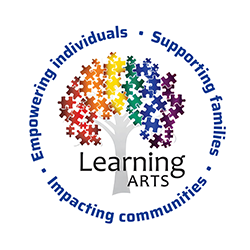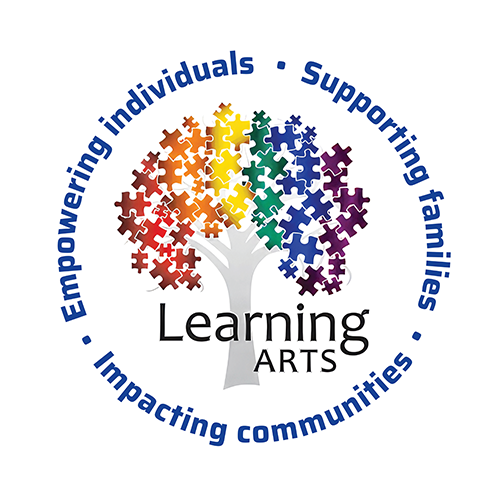
Therapies and Resources for Children with ASD

December 9, 2024
Navigating the world of therapies and resources for children with ASD can feel overwhelming for many parents, especially in the early days. Choosing the right therapy, managing the financial aspects, and finding the right support network can make a tremendous difference in your child’s journey. This guide is designed to help you explore therapy options, discover financial resources, and connect with supportive communities that will walk alongside you.
Choosing the Right Therapy for Children with ASD: Options Based on Your Child’s Needs
When it comes to therapy options, there isn’t a one-size-fits-all answer. Your child’s unique challenges, strengths and needs will determine which therapies are most effective. Here are some common therapies used to support children with various neurodivergences, including Autism Spectrum Disorder (ASD):
- Applied Behavior Analysis (ABA): A widely researched and effective approach that focuses on reinforcing positive behaviors and developing new skills.
- Speech Therapy: Often beneficial for children with communication challenges, speech therapy can improve verbal and non-verbal skills.
- Occupational Therapy (OT): Helps children develop the skills they need for everyday life, from fine motor tasks to sensory processing.
- Mental Health Services: Provides emotional and behavioral support, helping children manage stress and develop healthy coping mechanisms.
- Feeding and Play Therapy: For children facing challenges in eating or social interactions, these therapies can be especially helpful.
- Early Intervention Programs: Targeted programs that work on developmental milestones, often available for younger children.
 Each of these therapies can address different areas of need, and it’s common for parents to use a combination of approaches. Start by speaking with your child’s healthcare providers—such as their pediatrician or a psychologist—to get recommendations. When exploring options, consider asking potential providers questions like:
Each of these therapies can address different areas of need, and it’s common for parents to use a combination of approaches. Start by speaking with your child’s healthcare providers—such as their pediatrician or a psychologist—to get recommendations. When exploring options, consider asking potential providers questions like:
- What experience do you have working with children with ASD or other needs similar to my child’s?
- Are your methods evidence-based and backed by research?
- How do you view child development, mental health, and autonomy?
- Does your practice accept my insurance, and are there any out-of-pocket costs?
- What is the recommended frequency and duration of sessions?
- Are there any side effects or risks associated with the therapy?
- What outcomes can we realistically expect, and over what timeline?
Paying for Therapy: Financial Resources and Insurance Support for Children with ASD
Therapy can be costly, but there are financial resources available to help cover some or all of the expenses. Here are a few programs and options that may provide support:
- Government Programs: Programs like Supplemental Security Income (SSI), In-Home Supportive Services (IHSS), and Medi-Cal (in California) can provide financial assistance for eligible families.
- Insurance Plans: Speak with your insurance provider to understand what therapies are covered and if there are additional support options.
- Regional and State Resources: Many regions have specific programs or organizations that offer grants, scholarships, or financial aid to families. Look into regional centers and autism organizations, which often have resources for families.
Building a Support Network: Finding a Community that Understands
 Having a supportive network can make a significant difference in your journey. Connecting with other families who are navigating similar experiences can provide emotional support, advice, and a sense of community. Here are some ways to find and build support:
Having a supportive network can make a significant difference in your journey. Connecting with other families who are navigating similar experiences can provide emotional support, advice, and a sense of community. Here are some ways to find and build support:
- School-Based Groups: Some schools help facilitate parent groups for families with children with special needs. These groups offer a chance to meet others who understand the journey.
- Online Communities: Social media platforms like Facebook host autism support groups where families share resources, experiences, and encouragement.
- Local Autism Organizations: Many communities have organizations dedicated to autism support, offering events, support groups, and information on local resources.
- Playgroups and Neighborhood Meetups: Organizing a small playgroup in your neighborhood can be a great way for your child to socialize and for you to connect with other parents nearby.
Example Support Networks in Action:
- School-Based Support Group: A parent noticed other families facing similar challenges and organized a group through their child’s school. This group now meets regularly to discuss experiences, share resources, and plan activities.
- Online Community: Parents connect on platforms like Facebook or Reddit, sharing support across distance. Some families even organize virtual playdates.
- Local Organization Partnership: Partnering with a local autism organization can provide valuable resources, professional connections, and even a venue for regular group meetings.
- Neighborhood Playgroup: Parents in one neighborhood started a casual playgroup for children with autism and their siblings, creating a safe space for socialization and connection.
Advocating for Your Child’s Education: Working with Schools and Teachers
 Education is a critical part of your child’s development, and working closely with teachers and school staff can greatly enhance their experience. Under the Individuals with Disabilities Education Act (IDEA), schools are required to provide free, appropriate education to children with disabilities, which may include special classroom placements, speech or occupational therapy, and other services.
Education is a critical part of your child’s development, and working closely with teachers and school staff can greatly enhance their experience. Under the Individuals with Disabilities Education Act (IDEA), schools are required to provide free, appropriate education to children with disabilities, which may include special classroom placements, speech or occupational therapy, and other services.
Here are some strategies for effective communication and advocacy in school:
- Initiate Contact Early: Building a relationship with teachers early on and maintaining regular communication can help address challenges as they arise.
- Document Everything: Keep a file of your child’s Individualized Education Program (IEP), assessments, and any other relevant documents to track their progress.
- Be Proactive in Meetings: Before attending an IEP meeting, review all documents, ask questions, and feel empowered to request additional support if needed.
- Collaborate with Teachers: Approach teachers as partners in your child’s success. Sharing insights about your child’s strengths and challenges can help create a supportive learning environment.
Additional Resources: Books and Organizations for Parents
Expanding your knowledge through trusted books and reputable organizations can provide guidance and comfort. Here are a few recommendations:
- Autism Speaks: Offers information on symptoms, treatment options, and research updates, along with family services. Autism Speaks
- Autism Society: Provides webinars, toolkits, and support groups on a variety of topics. Autism Society
- National Autism Association: A source for tools, training, and resources for families. National Autism Association
Recommended Reading:
- The Complete Guide to Autism Spectrum Disorder by Tony Attwood: An overview covering diagnosis, communication, behavior management, and sensory sensitivities. It’s a great starting point for newly diagnosed families.
- The Explosive Child by Ross W. Greene: This book explores challenging behaviors, providing strategies for helping children develop problem-solving skills and emotional regulation.
Final Thoughts: Embracing the Journey
Choosing the right therapy, finding financial support, and connecting with a supportive community are all steps in creating a positive and empowering path for your child with ASD. Remember to take it one step at a time, seek advice when you need it, and give yourself permission to celebrate each milestone along the way. While this journey comes with its challenges, you are not alone, and every effort you make has a lasting impact on your child’s growth and happiness.
Remember, this blog is intended as an informational guide and is not a substitute for medical diagnosis, advice, or an official ABA therapy assessment. For personalized recommendations, consult with qualified healthcare professionals who can help you determine the best options for your child’s unique needs.

About Author: Learning Arts
Formed by Dr. Will Brandon in 1997, Learning ARTS has been on a mission to be a leading force in autism therapy, pushing the boundaries of what’s possible and creating a brighter future for individuals within the autism spectrum, their families, and communities for nearly 30 years.
It is that experience that helps us understand that finding the right treatment for an individual within the autism spectrum can be overwhelming and confusing. But rest assured, when you choose Learning ARTS, you’re choosing a partner for your family’s autism journey. We offer a personalized, family-oriented approach to care that focuses on building relationships and social skills while providing access to community and classroom functions. Together, with our team by your side, your family will thrive.
